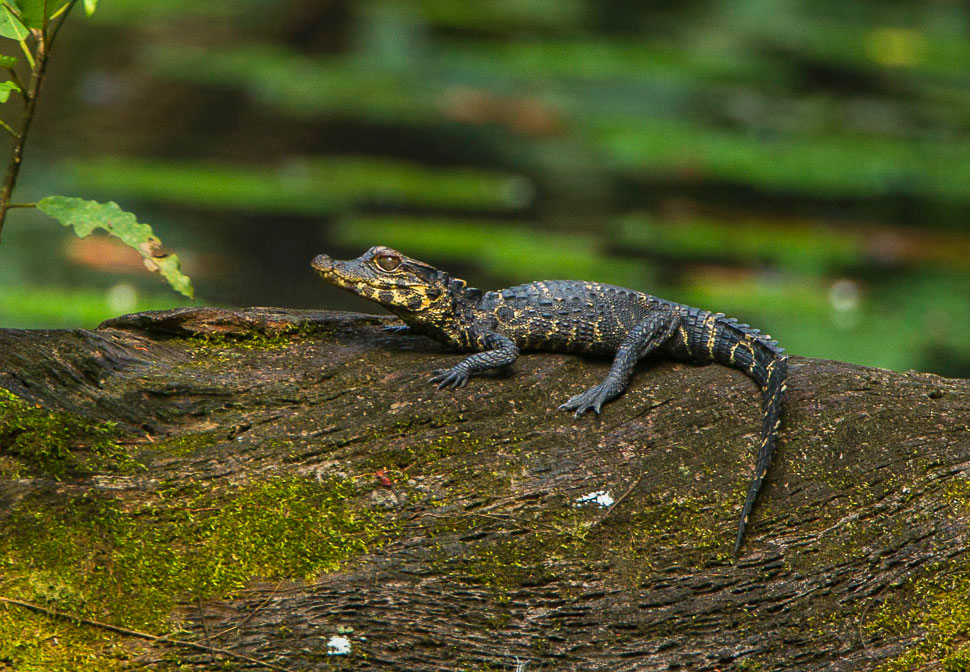Scientific Name
Osteolaemus tetraspis
Also known as: African Dwarf Crocodile
Description
The African Dwarf Crocodile is among the smallest of crocodiles. Because of their small size, they are slower moving than other crocodiles but are no less aggressive. They are heavily armored with scales traveling up their neck, back, and tail. Adults are uniformly dark in color, while juveniles are a lighter brown color. The tip of the snout is turned upright.
Food
Crocodiles are carnivorous. They enjoy fish, amphibians, small reptiles, crustaceans, and possibly other terrestrial prey.
Habitat
The African Dwarf Crocodile lives in West Africa and West Central Africa in swamps, slow-moving rivers, lakes, and marshes. The dwarf crocodile forms a land home by burrowing with its claws. These burrows are dug just above the waterline and extend many feet to create a den or chamber.
Predators
Birds, mongoose, and larger crocodiles often eat crocodile eggs and baby crocodiles. Humans are the only predator of adult crocodiles, who have hunted them to near extinction. Although, they have been hunted for food by indigenous people throughout history, hunting increased as the European market begin desiring their exotic skins to make purses, wallets, handbags and belts. Today, they are considered an endangered species.
Food & Diet
The African Dwarf Crocodile kills its prey and devours it immediately. Since the African Dwarf Crocodile is small and hunts prey that is too large to be swallowed whole, the animal appears to be more aggressive than other crocodiles, tearing the meat into tiny pieces before it is chewed and swallowed. Like all crocodiles, the African Dwarf Crocodile is considered nocturnal. During the day they often lie at the water’s edge in large numbers, sleeping under the sun. At night they retreat to the water, where they live solitary lives and establish individual territories. Adult crocodiles can hold their breath for up to an hour under water.
Breeding & Offspring
Females breed once a year and lay up to 20 eggs around May and June. Since crocodiles are cold-blooded and do not nurse their young, parental care is limited. Soon after the eggs hatch, the mother crocodile gently carries her young in her mouth to the water’s bank to release them. Baby crocodiles remain close to their mother for protection for a few weeks after hatching, eating worms and insects. As they mature, they add frogs, tadpoles, and small fishes to their diet.

Senses
The crocodile’s eyes are located high on their heads to help them see above the waterline while their bodies are submerged in water. Their skin is heavily armored with hard scales making them an unpleasant hunt for another predator. They swim with their tails and steer with their feet.

Lydia King is a huge animal lover and has always been fascinated with learning about the animal kingdom. She enjoys writing about anything animal related from scientific information about rare species to animal references in pop culture.












